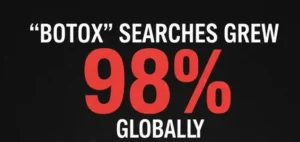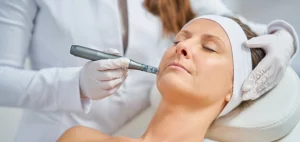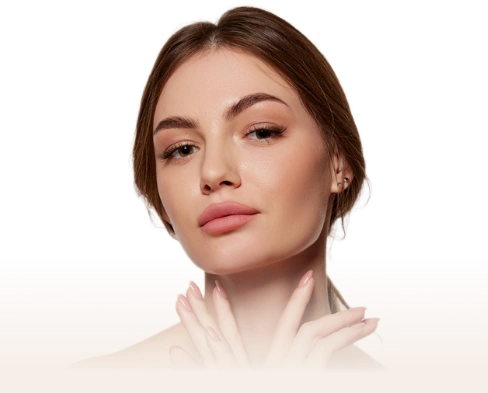Have you ever caught yourself doing a double-take in the mirror, noticing unwanted wrinkles, skin folds, or dullness of your complexion? – Perhaps your skin doesn’t feel as smooth as it once did, and those fine lines are getting more prominent.
Individuals encountering these signs of aging try looking for solutions online, often stumbling upon dermal fillers, notably Restylane Filler; and expressing interest to try them out. It’s a common scenario, with patients wanting to reflect their inner vitality outwards.
While Restylane frequently emerges as a recommendation, it’s important to understand what dermal fillers are, and how they work – so let’s begin!
What Are Dermal Fillers?
Being safe and non-toxic substances injected into the skin, Dermal fillers are known for combating wrinkles, skin folds, and other aging signs. Administered by dermatologists or expert aestheticians, dermal fillers smooth fine lines around cheeks, eyes, nose, and mouth. They plump and define lips, reduce acne scars, rejuvenate sunken cheeks, contour the face, and even address hand wrinkles.
Typically containing hyaluronic acid, a natural skin hydrator, fillers boost moisture retention, reduce wrinkles and scars, and stimulate collagen production, promoting skin health, elasticity, and a radiant appearance.
Types of Dermal Fillers
- Hyaluronic Acid Fillers: These are the most common dermal fillers and include brands like Juvederm, Restylane, and Belotero. Hyaluronic acid is a naturally occurring substance that helps maintain skin volume and hydration. These fillers are versatile and can treat various areas of the face, including wrinkles, folds, and lip augmentation.
- Calcium Hydroxylapatite Fillers: Brands like Radiesse contain calcium hydroxylapatite, a mineral-like compound found in bones. These fillers provide immediate volume, along with stimulating collagen production over time, making them suitable for deep wrinkles and volume loss in areas like the cheeks.
- Poly-L-lactic Acid Fillers: Fillers such as Sculptra are made of poly-L-lactic acid, which stimulates collagen production gradually over several months. They also treat facial volume loss and can provide long-lasting results.
- Polymethylmethacrylate (PMMA) Fillers: PMMA fillers, like Bellafill, contain tiny microspheres suspended in a collagen gel. They provide immediate volume and stimulate collagen production, offering long-lasting results for correcting deep wrinkles, acne scars, and facial contouring.
- Autologous Fat Transfer: This involves harvesting fat from one part of the body, purifying it, and injecting it into areas requiring volume restoration. It offers natural-looking results and can be a more permanent solution, but multiple sessions may be needed.
- Silicone Fillers: Silicone injections are permanent fillers that provide long-lasting results. However, they are less commonly used due to potential complications such as migration and granulomas.
What is a Restylane Filler?
Restylane stands out among various dermal filler options as a premier brand that is approved by the FDA and is primarily composed of hyaluronic acid. Its clear gel consistency allows for precise injections, adding fullness and volume to targeted areas while also stimulating the body’s natural hyaluronic acid production.
This versatile filler effectively addresses medium to severe-depth wrinkles, such as nasolabial folds, marionette lines, and corner-mouth wrinkles, resulting in a rejuvenated and more youthful appearance.
With a high satisfaction rate of 95%, Restylane’s results can last well over a year post-treatment, making it a trusted choice for those seeking long-lasting cosmetic enhancement.
Different Brands of Restylane Filler
– Restylane-L:
Restylane-L offers the same formulation as traditional Restylane but includes 0.3% Lidocaine, a common anesthetic. Lidocaine helps alleviate discomfort during the procedure and may reduce subsequent inflammation, potentially expediting visible results.
– Restylane Refyne:
Restylane Refyne targets laugh lines using a formulation similar to Restylane-L but incorporating proprietary XpresHAn Technology™. This technology enhances the gel’s consistency, ensuring a soft, natural look quickly. Dermatologists often combine Restylane Refyne with Restylane-L for comprehensive facial rejuvenation.
– Restylane Defyne:
Restylane Defyne is designed for deeper facial wrinkles and chin augmentation, particularly addressing Nasolabial folds and Marionette lines extending to the chin. With a satisfaction rate exceeding 90% for chin augmentation, Restylane Defyne effectively improves severe wrinkles and enhances facial contours in the lower face region.
Difference Between Botox and Restylane
Botox, one of the earliest and most widely-used injectables, contains Botulinum toxin Type A, which temporarily interrupts nerve-muscle communication to diminish wrinkles like Crow’s feet and frown lines. FDA-approved for various applications including hyperhidrosis and muscle spasms, Botox is renowned for its efficacy in addressing deep wrinkles.
In contrast, Restylane, a hyaluronic acid-based dermal filler, fills spaces to smooth wrinkles without affecting muscle contraction. Alongside Restylane, other popular dermal filler brands like RHA, Belotero, Juvederm, Radiesse, and Sculptra offer diverse options for facial rejuvenation.
Restylane Filler Procedure
Restylane filler works by injecting a gel containing hyaluronic acid, a substance naturally found in the skin, into targeted areas to add volume, smooth wrinkles, and enhance contours. Hyaluronic acid attracts water molecules, plumping up the skin and providing a more youthful appearance. Over time, the body gradually absorbs the filler, so treatments typically need to be repeated to maintain results.
How Long Does it Last?
Patients often inquire about the longevity of fillers, seeking assurance of their investment’s value. Restylane stands out for its enduring effects, typically lasting between 6 to 12 months post-administration – however, the results may vary for individuals. Factors such as injection site, filler quantity, and the body’s metabolic rate influence duration. Lip fillers generally last for around six months. Adhering to a dermatologist-recommended skincare regimen can optimize filler outcomes.
Conclusion
If you are looking for an expert Restylane Filler provider in NYC, Syra Aesthetics led by Dr. Syra Hanif, is the right destination for you. Book your appointment today!

About The Author
Dr. Syra Hanif M.D.
Board Certified Primary Care Physician
Dr. Hanif is the Director of Aesthetic Medicine. She is a board-certified physician in Aesthetic Medicine who specializes in using non-surgical alternatives in order to enhance one's appearance through Botox and fillers.
Read More











